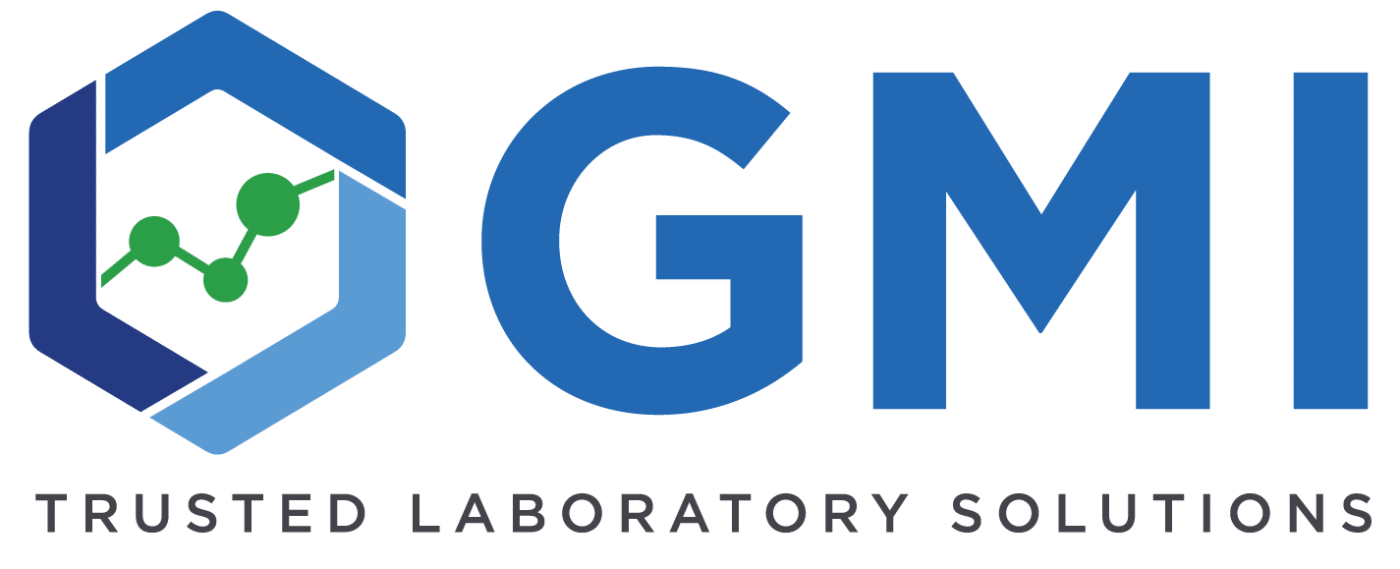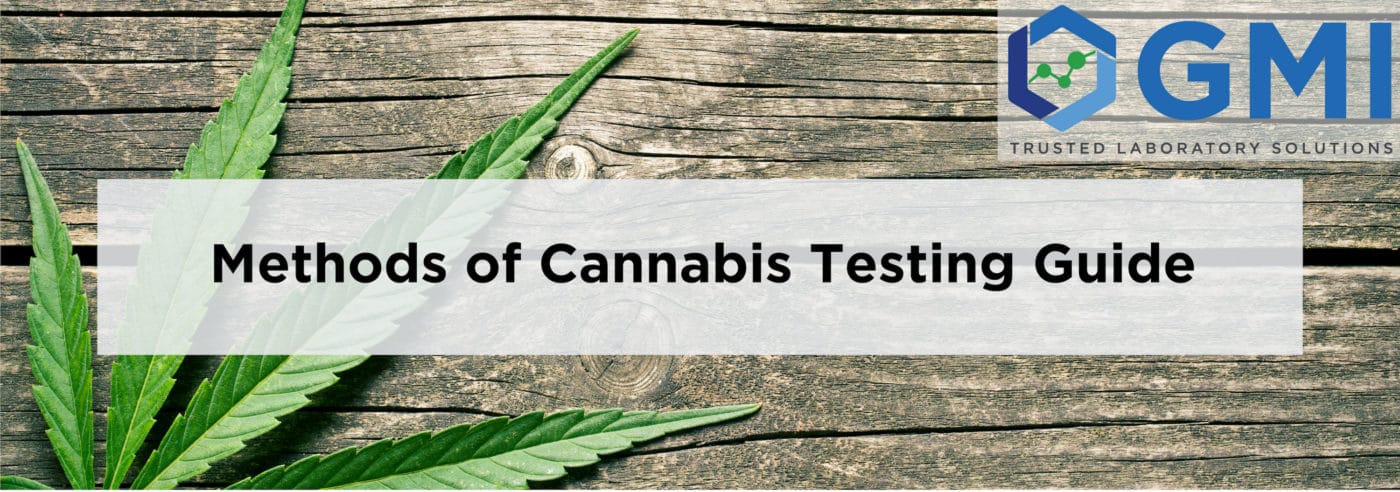Uncategorized
Different Methods of Cannabis Testing
With recent developments involving medical grade and recreational cannabis, and changes in regulations regarding its usage, cannabis is evolving into a rapidly-growing industry. Numerous jurisdictions are mandating inspections and quality testing of cannabis to ensure that these products are in compliance with government regulations are free of potentially dangerous contaminants. To assist states in maintaining public health and consumer safety, appropriate cannabis testing must be implemented to determine the diverse and specific elements included in a cannabis sample.
Cannabis is comprised of hundreds of chemical constituents, each with unique characterization and biological significance. Due to this, analysis of each strain is necessary to understand the suitable application of a particular cannabis product. To expound on the different methods performed during cannabis analysis, GMI has prepared this simple guide to supplement your understanding on the scientific process of measuring various chemicals and compounds in your cannabis sample.
Different Methods of Cannabis Testing
Different analytical testing methods are employed to evaluate the quality, safety, and appropriate application of a cannabis product. Testing procedures commonly include the following:
Potency
Cannabis potency testing characterizes the presence level of cannabinoids in a sample. THC, CBD, and CBN, the most common cannabinoids, are quantified to determine potency. It is crucial to inspect the levels of these cannabinoids as these heavily influence the effects of a cannabis product. Cannabis analyzer instruments generally use high resolution HPLC systems to quickly identify cannabinoid analytes.
Cannabinoid Characterization
Cannabinoid profiling or characterization is used to accurately identify and quantify the presence of various cannabinoid compounds in a sample. This is typically performed to determine the level of medical efficiency of a cannabis product. The results of cannabinoid characterization is usually presented in concentrations with percentage to weight ratios. Thus, the volume of the sample is taken into consideration and is measured with extreme precision. To execute cannabinoid characterization, laboratories normally employ HPLC Instruments and Gas Chromatography systems.
Heavy Metal Screening
Cannabis, in its natural form, is perceived to be safe. However, it can elicit heavy metal contaminants from the environment. Wide-scale production of cannabis are sometimes located in former industrial sites which pollute the soil with various metals. Cannabis plants can also be sprayed with pesticides or fertilizers containing heavy metals such as cadmium, lead, arsenic, or mercury. Due to this potential health hazard, heavy metal screening is performed to assess the presence of heavy metals and quantify toxicity through Inductively Coupled Plasma techniques.
Terpenes
Terpenes and terpenoids are volatile compounds that provide the scent and flavor of cannabis. These substances also have health benefits and are often extracted for medical interest. Terpenes have a therapeutic effect and can be used as a muscle relaxant. Specific Terpene compounds can also have anti-inflammatory and antibiotic properties. Terpene profiling and analysis can be conducted using Gas Chromatography systems.
Moisture Content
Managing the amount of moisture is a significant procedure in processing and storing cannabis due to regulatory requirements by certain states. The percentage of water activity can also suggest whether cannabis has been adequately and properly cured. Moreover, water activity is often used for safety and quality control as this signifies the potential for microbial growth.
Residual Solvents
Residual solvents are byproducts of extraction processes. In some instances, certain procedures may produce harmful residual solvents or impurities such as acetone, ethanol, butane, benzene, propane, and other solvents. This is why residual solvent analysis is such an important step in cannabis testing.
Herbicides & Pesticides
The presence of chemicals such as herbicides and pesticides are also tested and quantified during cannabis analysis. These chemicals are typically migrated through water, air, soil, or through other organisms. In a pesticide or herbicide formula, some compounds are harmless while there can also be toxic properties which can cause severe damage to health. States require pesticide and herbicide screening to ensure that cannabis products do not contain dangerous concentrations of herbicides and pesticide residues.
Fungal & Mold
Total Yeast and Mold (TYM) tests are performed to identify yeast and mold contamination in a cannabis sample. States also have mandated requirements for total yeast and mold counts which are presented in the number of colony units per gram of cannabis. This is enforced by cultivating an ideal environment for yeast and mold to grow, followed by a 24 to 48 hour incubation period for the microorganisms to multiply. Other states utilize polymerase chain reaction testing (PCR), a molecular biology technique employed to detect strains of harmful mold through DNA analysis. This highly-sensitive and selective technique makes use of instrumentation such as High Performance Liquid Chromatography Instruments (HPLC) to complete fungal and mold testing.
Microbiological & Mycotoxins Screenings
Plants can be a breeding ground for different kinds of microbes including bacteria and molds. Many of these microorganisms produce mycotoxins and can carry diseases, posing a serious health concern to consumers. Depending on factors including detection sensitivity and purpose, laboratories can use HPLC instruments or a Fluorometer to identify and quantify mycotoxins and microbials in a cannabis sample.
Analytical Techniques for Testing Cannabis
Several scientific techniques are commonly utilized by laboratories to perform accurate and precise cannabis inspections. The type of instrument for cannabis testing is highly dependent on the type of technique to be used. Primary methods employed to characterize cannabis include:
GC-MS (Gas Chromatography/Mass Spectrometry)
Advanced and powerful cannabis testing methods include different types of chromatography techniques. GC-MS is a highly sensitive and precise technique used for identifying the presence of cannabinoids like THC and its metabolites. This technique can provide structural information on cannabis constituents and is also employed to rule out false-positive findings by less superior methods. This technique is carried out by mass spectrometers such as the Agilent HP 5972 and the Gas Chromatograph Mass Selective Detector.
Mass Spectrometry
This wide-ranging technique is used in different sectors requiring analysis and sample profiling – Pharmacokinetics, trace gas analysis, even space exploration. More importantly, this technique is also utilized in cannabis testing, particularly in detecting contaminants and unwanted compounds like pesticides and mold. This method is a great way to identify pesticides and substances including water, butane, carbon dioxide, ethanol and other solvents used in cannabis manufacturing. A wide variety of mass spectrometry instruments are available in the lab industry market. Mass spectrometry can be integrated with other chromatography techniques for more powerful analysis, such is the case with LC/MS and GC/MS.
ICP/ICP-MS (Inductively Coupled Plasma/Mass Spectrometry)
Combining high temperatures from an ICP source with a mass spectrometer’s ability to separate and detect ions, ICP/ICP-MS is useful for identifying low concentrations of most elements. This analytical technique is also employed in determining and quantifying trace levels of heavy metal compounds in cannabis samples. With ICP/MS technology, elements can be detected at milligram to nanogram levels. This technique may be used for both simple to complex matrices.
HPLC (High-Performance Liquid Chromatography)
HPLC is one of the most accurate methods for quantitative determinations of several primary cannabinoids including THC, THCA, CBD, CDBA and CBN. The HPLC method is also used for determining the potency of a cannabis sample, measuring the presence of cannabinoids and their levels of strength. Different models of HPLC systems are ideal for determining THC potency, detecting mycotoxins (FLD/PCR), and cannabinoid characterization.
GC (Gas Chromatography)
GC is widely used in the lab industry for cannabis testing. This technique may be employed in determining potency in a cannabis sample, Terpene profiling, testing for pesticide residues and residual solvents. Implementing Gas Chromatography for cannabis testing used to require extensive knowledge and training on analytical chemistry. However, with the increasing demand for quality and convenience, different lab instruments being offered in the market are now capable of accurate and timely cannabis testing through gas chromatography.
State Rules & Regulations for Cannabis Lab Testing
The legalization of cannabis is in part, attributed to the legislation set in place with regards to laboratory testing and analysis. In order to protect public safety and health, rules and requirements are put together by specific states, all of which decided to make laboratory testing for potency and residuals mandatory.
To ensure that cannabis usage is abiding with state laws, it is necessary to be aware and compliant of the requirements of your state. In addition to this, laboratories that perform cannabis testing must have the appropriate instruments and the capability to execute the detection of different chemical substances at trace levels. End-users and suppliers of cannabis are heavily dependent on these laboratories to guarantee that cannabis samples are free from contaminants, heavy metals, and pesticide residues.
GMI is a reliable source of Certified & Warrantied cannabis testing instruments and various lab equipment, training, and support. GMI is continuously working with laboratories and firms in the scientific and research industry, providing cutting edge new and refurbished cannabis testing equipment, as well as instrumentation services. These include repairs and preparation of on-site support plans to ensure that instruments are in peak condition and that your laboratory workflow is at its most efficient. As an ISO-certified company, we assure that every equipment we market have undergone rigorous refurbishing, re-calibration, and testing.
For any assistance needed on acquiring new or used cannabis testing instruments system, you may reach us at 1-888-702-1775 or email us at [email protected].


